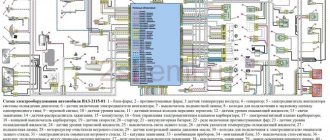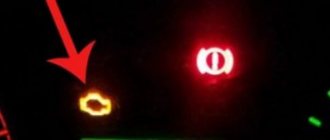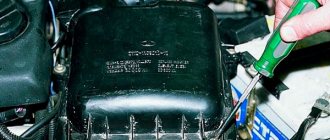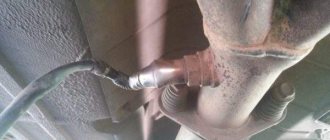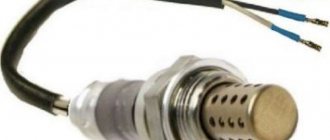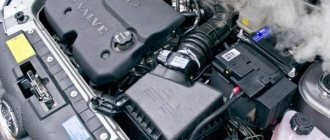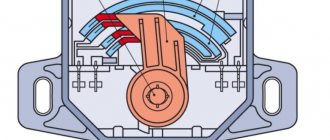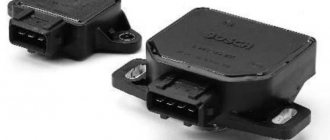Often, when operating a vehicle on gas, owners do not pay due attention to the maintenance of the gas equipment system. And often the malfunctions of the 4th generation HBO, which are what we will discuss in today’s article, make themselves felt at the most inopportune moment.
The car simply refuses to run on gas, it loses power, the engine stalls, or fuel consumption increases significantly, why does this happen? Most often, experts identify two reasons why 4th generation gas equipment malfunctions occur:
- Maintenance of the gas equipment system was not carried out on time, or was not carried out at all. Remember! Filters on 4th generation gas equipment should be replaced once every 10,000 km, and with the quality of gas at our gas filling stations even more often!
- Wear of system parts over time, increased wear of components can also be influenced by poor quality gas, incorrectly configured ECU or incorrectly adjusted injectors.
Frequent breakdowns of 4th and 2nd generation gas equipment
As a rule, owners of cars with LPG installation complain about the engine stopping when switching from liquefied gas to gasoline.
The cause of this malfunction lies in improper installation of the system. The malfunction is caused by the fact that when installing gas equipment, the quantity and combustion conditions for liquefied gas are the same as for gasoline. However, these parameters differ significantly from each other. It is important not to hesitate to visit the workshop, and as soon as you see the first symptoms, you should immediately take the car to a specialist. This will help save nerves and unnecessary expenses. Performing computer diagnostics of the system under the guidance of a specialist should identify the cause of the problem. The symptom of both malfunctions will be increased fuel consumption and a decrease in engine power. Running a computer diagnostic on the system will indicate a faulty sensor. Malfunctions of the gas supply system can also be caused by contamination of the air filter, fine and coarse filters.
Symptoms of malfunctions will be increased fuel consumption and a decrease in engine power. If the air filter malfunctions, characteristic shots may additionally appear in the intake manifold (a very common occurrence in the 2nd generation).
The gearbox often also fails. The first main problem indicating a gearbox malfunction may be frequent switching of the unit to gasoline, especially during acceleration. The reducer, popularly called a regulator, is not able to deliver the appropriate amount of gas to the system (maintain the set pressure), the sensor reads pressure drops as a lack of gas in the tank and switches the car to a gasoline power source.
The second reason for gearbox malfunction is reduced heat generation. During hard work, the reducer is not able to heat the expanded gas to the nominal operating temperature, which can lead to increased consumption of gas fuel. In both cases, you can restore or replace with a new gearbox.
It is worth remembering that an LPG installation, even the best one, like any thing, is subject to natural wear and tear. Possible malfunctions should not be scary, because there are enough workshops involved in their service. If we are looking for a solution to problems associated with the installation of liquefied gas, it is worth paying attention to services authorized by the installation manufacturer. The service can provide professional assistance both in the field of warranty repairs within the warranty and post-warranty service. For the convenience of clients, a wide range of services is provided.
Causes of malfunctions of car gas equipment
If during the operation of the car unexpectedly deviations from the norm are discovered in any of the indicators, it is necessary to immediately inspect the car. The absence of external signs of breakdown will be the reason for diagnostics using special equipment. Problems occur for the following reasons:
- wear of consumables: filters, seals;
- physical damage to mechanisms and equipment components;
- improper operation of the vehicle;
- refueling with low-quality fuel;
- installation errors (poor quality installation of equipment).
Complete diagnostics can be done on your own if you have some experience or at gas equipment maintenance centers. Using special tools and devices, a specialist will identify the specific reason for the malfunction of the gas equipment.
Important! Some problems cannot be solved on your own if you do not have professional skills and knowledge in this area.
Settings
Do-it-yourself diagnostics of 4th generation HBO can be carried out by installing the equipment on the car yourself. To do this, you will need a diagnostic scanner or a laptop with the appropriate program.
With the help of such devices, the fuel correction of the ECU is determined. It is calculated as a percentage of normal fuel injection. The reference readings of the monitoring sensors are taken as a basis. The equipment is configured in such a way that the correction occurs within +-5%. Tuning is best done under load. Afterwards the result is checked at idle speed. Typically no additional configuration is required.
Functions of temperature elements in gas equipment
From the cylinder to the evaporator, gas fuel (propane-butane mixture) comes in a liquefied state. Passing through the channels of the reducer, the gas is heated by the energy of the car engine coolant and passes into the vapor phase suitable for mixture formation and combustion.
The 4th generation LPG device provides for automatic switching from gasoline to gas. Therefore, the system’s electronic control unit (ECU), based on a signal from the temperature sensor of the reducer-evaporator, sends a command to open the solenoid valve for gas supply to the injectors.
The normal temperature for a car to switch to gas is 35-55°C (set in the program when setting up LPG, depending on climatic conditions and time of year).
Note that this sensor does not measure the temperature of antifreeze/antifreeze; its purpose is to take readings specifically from the coolant housing (gearbox). This was done, among other things, to avoid damage to the evaporator membrane during a cold start.
The gas temperature during injection is not equal to the temperature of the reducer. The gas passes through filters, MAP sensor and injectors, and its condition is also influenced by external factors.
A gas temperature sensor is needed to additionally adjust the fuel supply time. The correction map is set in such a way that when the car switches from gasoline to gas, the gasoline injection time does not change.
The default temperature correction is zero.
Malfunctions
Another case in which diagnostics is required is breakdowns and malfunctions. In this case, very often diagnostics using a scanner does not help. Errors only indicate a lean or rich mixture. But the real reason is not revealed. In this case, you will have to carry out some of the diagnostic work manually.
Often the speed on an internal combustion engine (internal combustion engine) equipped with gas equipment begins to float. There are only two reasons for unstable operation:
- No spark;
- No fuel.
The first reason is quite simple to deal with. To do this, it is enough to carry out the usual work on checking the ignition. Finding a fault in the HBO can take quite a long time. The easiest way is to connect to the ECU. But this is not always possible. Therefore, you should take turns clamping the hoses coming from the insert and connected to the nozzles. If, after clamping, the engine begins to fluctuate, then the injector is working. It is advisable to check the presence of a signal pulse to the ECU. This may be the reason. The main reason is injector failure or air leaks.
Take a close look at the pressure. If it drops in the system with a sharp increase in speed, then the gearbox should be replaced. If there is a lack of antifreeze in the cooling system, the gearbox may overheat, which will also lead to unstable engine operation.
Sometimes fuel consumption increases. This is an unpleasant situation. First of all, you need to check the operation of the ignition system, correct tire inflation and other factors affecting fuel consumption. If everything is in order there, we diagnose the HBO.
Types and device
At the heart of gas and gear temperature sensors is a thermistor. The thermistor has a negative characteristic with the designation NTC, i.e. when heated, its resistance decreases.
In 4th generation HBO systems, elements with a nominal value of 1.7 to 10 kilo-ohms are used. But the most common are 2.2 and 4.7 kOhm.
The gearbox temperature sensor has a brass body, differing only in the connector, length and size of the thread.
Gas sensors can be of plastic or metal construction. The location may include:
Other problems
Owners of cars with gas equipment also face other problems. Moreover, these difficulties can only be indirectly related to HBO. Such malfunctions include the lack of automatic switching from gasoline to gas. In this case, you need to check the serviceability of the gas temperature sensor. The reason may also be low voltage on the battery. Another reason is a failure of the tachometer or a break in the wire going from it to the LPG.
Severe dips when operating on gas, even to the point of stopping the engine, indicate the need to check the ignition. Most often, the reason is high-voltage wires or spark plugs. The fact is that to ignite the gas mixture, a more powerful spark is required, compared to gasoline. If it is not strong enough, then problems will occur with the use of HBOT.
Conclusion
. When operating gas equipment, the driver will sooner or later encounter problems. Most often, malfunctions and failures occur due to careless operation. In most cases, diagnosing 4th generation HBO yourself is more effective than a similar procedure in a service center. Therefore, it is better to carefully study the design of this system and find the fault yourself.
There is not so much perfect in this world, and maybe not at all, so when something, at first glance, very thoughtful and perfect fails, you should not be surprised, you should accept it as inevitable.
LPG equipment is also susceptible to breakdowns and malfunctions. Today we will talk about malfunctions of the 4th generation HBO ; we will try to suggest the cause of the breakdown (inoperability) based on the characteristic symptoms.
First, a few words about what causes fourth-generation gas equipment to malfunction.
- Most often, gas equipment fails due to the fault of the motorists themselves. There is no desire to delve into the essence of the HBO device and perform the slightest maintenance thereof.
- Wear of parts also occurs due to poor quality gas, pollution, as well as violation of operating rules and errors made when installing gas equipment on a car.
HBO maintenance
Maintenance and operation of a vehicle with a STAG control system
MAINTENANCE OF THE GASOLINE/GAS SWITCH
Description of the Petrol/Gas switch.
The only element that serves to connect the driver with the STAG control unit is the Petrol/Gas switch.
A) Gas level sensor – Four green LEDs display the gas level in the cylinder. The reserve level is signaled by a glowing red LED, located in a row with green LEDs that indicate the filling level of the cylinders - LED GoFAST, LED-300, in the case of LED-300/401 V, as well as LED-401; the red reserve LED is located under the switch state change button.
B) Signal LED
Operating status for: STAG-200, STAG-4, STAG-300:
Operating status for: STAG-4 Q-BOX, STAG 400 DPI, STAG 200 GoFast:
C) B/G button, AC logo button, GAS button
– selection of the operating mode of the LPG/CNG installation.
Programming the type of fuel.
Control unit in GASOLINE mode:
Attention: The engine will only be powered by gasoline.
Control unit in AUTO mode:
Attention: each subsequent engine ignition will occur in AUTO mode.
H. Information sound signals generated by the switch:
Signs of complete gas consumption:
– sound – three beeps (short or long, depending on the switch); – blinking green SIGNAL DIODE:
– blinking white diode under the button – “AC” logo (for LED-300/401B and LED-401).
Note: The gas level indicator displays the current gas level in the cylinder after switching the engine operating mode to gas; Due to the high inertia of the gas in the cylinder, as well as due to the technical capabilities of the measuring system, the diodes indicating a full cylinder may go out disproportionately in relation to the actual state of the gas, and the reserve indication should be considered as indicative.
Emergency engine start on gas
(only for STAG-200, STAG-4, STAG-Z00, STAG-4 Q-BOX, 200 GoFast)
Procedure for STAG-200, STAG-4, STAG-ZOO:
Procedure for STAG-4 Q-BOX, 200 GoFast:
NOTE! An emergency start is possible only when the air temperature is positive and the gas equipment is properly installed. After an emergency start, you should wait until the engine temperature reaches the optimal level! Otherwise, the gearbox may freeze and damage the engine!
Automatic calibration of gas level indicator
(only for STAG-200, STAG-4, STAG-300, STAG-4 Q-BOX, 200 GoFast)
Calibration procedure for STAG-200, STAG-4, STAG-300:
Calibration procedure for STAG-4 Q-BOX, STAG 200 GoFast:
Indication of calibration status after completion of the procedure:
smooth increase and then drop of the pointer on the LED indicator, from reserve to maximum and back (twice) - calibration is successfully completed;
changing the level indicator on the LED indicator from reserve to maximum (five times) - the calibration could not be completed successfully.
ATTENTION. Calibration should be carried out while filling the gas into an empty cylinder. Upon completion of refueling, turn on the ignition switch, which is equivalent to completing the calibration procedure.
Description of gas equipment with control unit: STAG-200, STAG-4, STAG-300, STAG QBOX, STAG 400DPI
Automotive gas equipment is designed to supply a car engine with gas fuel and is an additional fuel system. Gas is supplied to the engine compartment of the car from a cylinder through shut-off valves through a high-pressure pipeline. In the engine compartment, gas flows through a pipeline through a gas solenoid valve (can be combined with a gas reducer) into the gas reducer. Gas reducer is a device that reduces gas pressure to 2 bar. When using propane-butane as fuel in a gas reducer, not only a decrease in pressure occurs, but also a transition from the liquid phase to the vapor phase, which is accompanied by a strong decrease in temperature. Therefore, during these processes, additional heating of the gearbox is required, which is provided by the engine coolant. From the reducer, gas flows to the gas injectors through a vapor phase purification filter. The gas injector nozzles are connected to the gas supply fittings to the engine cylinders, located similarly to gasoline injectors. After switching the car to gas, the gas injectors begin to inject gas fuel instead of gasoline injectors. Gas injection is controlled by the STAG electronic gas injection control unit.
Electronic gas injection control units STAG-200, STAG-4, STAG-300, STAG QBOX, STAG 400DPI with AC SA software calculate the required opening time of gas injectors based on the injection time indicators of the gasoline controller. The process of calculating the required dose of gas fuel and opening the gas injectors occurs synchronously with the receipt of the control signal from the gasoline control unit, which guarantees continuous monitoring of engine operation, exhaust gas composition and ensures optimal operating conditions for the exhaust gas converter. The applied control algorithms interact optimally with modern gasoline injection controllers equipped with the OBD on-board diagnostic system and do not lead to conflicts between systems.
Maintenance and operation of a vehicle with an electronic control unit STAG-200, STAG-4, STAG-300, STAG QBOX, STAG 400DPI
FUEL SWITCH OPERATION
Description of fuel type switch LED-300.
The fuel type switch is the only element of the system that displays the operating mode of the STAG controller and allows you to switch fuel types manually.
1.1 Gas level indicator – displays the gas level in the cylinder:
1.2 Signal LED – displays the type of fuel the engine is running on:
1.3 Button B/G – Switching operating modes of gas equipment.
Description of fuel type switch LED-400.
The fuel type switch is the only element of the system that displays the operating mode of the STAG controller and allows you to switch fuel types manually.
2.1 Gas level indicator – displays the gas level in the cylinder.
2.2 Signal LED – AC logo, displays the type of fuel the engine is running on:
2.3 Button B/G (AC logo) – Switching operating modes of gas equipment.
Switching operating mode.
3.1 Switching to GASOLINE mode:
Attention: The engine will only run on gasoline.
3.2 Switching to AUTOMATIC mode:
Attention: When the engine starts, the system will operate in automatic mode.
Sound signals generated by the switch:
Note: The full level fuel selector displays the gas level in the cylinder after the system is switched to gas mode. Due to the high inertia of the gas in the cylinder, as well as due to the technical features of the measuring device, the gas level indication LEDs may go out not in proportion to the actual gas level in the cylinder, and the reserve balance indicator must be taken as indicative.
4.1 Emergency start of the engine on gas:
Attention! An emergency start of a gas engine is possible only if the air temperature is positive and gas equipment with an electronic control unit STAG-200, STAG-4, STAG-300, STAG QBOX, STAG 400DPI is correctly installed. After an emergency start, you must wait until the engine has completely warmed up to operating temperature and only then start driving, otherwise the gas reducer may freeze and damage other engine systems.
4.2 “Out of gas” signal:
Safety rules for operating a car with gas equipment
It is strictly prohibited:
Periodic maintenance.
Maintenance allows not only to improve the performance of the system and increase the fault tolerance of gas equipment, but also to reduce the overall cost of operating the system. Maintenance of the vehicle's gas fuel system does not replace the maintenance of other systems prescribed by the vehicle manufacturer. Vehicle maintenance must continue to be performed at the prescribed frequency. As part of the maintenance of gas-cylinder equipment, the condition of high-pressure pipelines, all hoses and their connections, the reliability of fastening of units, the replacement of filter elements and checking the operating parameters of the system using diagnostic software are carried out.
Zero maintenance is the first maintenance of the gas fuel system of a car, performed at a mileage of 2,000 (± 100) km after installation of gas equipment. Zero maintenance is performed free of charge by specialists from the specialized service station where the equipment was installed.
Maintenance. Regular maintenance is paid and must be performed every 10,000 (± 500) km, but not less than once every 12 months (± 1 month) by specialists from a specialized service station.
Often, when operating a vehicle on gas, owners do not pay due attention to the maintenance of the gas equipment system. And often the malfunctions of the 4th generation HBO, which are what we will discuss in today’s article, make themselves felt at the most inopportune moment.
The car simply refuses to run on gas, it loses power, the engine stalls, or fuel consumption increases significantly, why does this happen? Most often, experts identify two reasons why 4th generation gas equipment malfunctions occur:
Dips during sudden gas changes
- Gas injectors are not calibrated correctly.
- The gas filter is clogged.
- The gas pressure in the reducer is insufficient.
- Problem with gas lines.
If, when switching to the engine, it starts to “go bad”, most likely the problem is in a faulty gas system , in this case, switch back to gasoline and continue driving it until the reasons for the interruptions in the operation of the internal combustion engine are established. Repairing gas equipment with your own hands is highly undesirable unless you are well versed in gas equipment and have all the necessary equipment to carry out repair work. In all other cases, we recommend contacting specialists or the service station that installed this gas equipment.
Thank you for your attention, see you again at HBOshnik. Bye!
Repair of gas pressure sensor
Manufacturers of gas equipment indicate that the pressure sensor cannot be repaired; if it malfunctions, it must be replaced, i.e., purchase a new one. However, some car enthusiasts undertake to repair it on their own. We do not recommend doing this. Firstly, modern gas equipment kits are complex electronic systems; you need to be a specialist in this industry to undertake its repair. Secondly, a faulty or incorrectly repaired gas pressure sensor can lead to disastrous consequences: an accident, car failure, etc. In addition, you need to understand that the pressure sensor is customized for your specific car with all its features and features of the kit HBO. For it to work correctly, even after installation by a professional, you will need to “adjust” it using a special computer program. However, let’s not exaggerate: pressure sensors rarely fail. And sometimes the cause of alarms from the indicator can be explained, for example, by the fact that the indicator itself has burned out, and not the gas pressure sensor. In conclusion, we note that the HBO kit contains another important sensor - a sensor for determining the gas level in the cabin. He is responsible for the safety of the driver and passengers. Just like the pressure sensor, if the gas level increases, it gives a signal to the driver.
SergeyKoLeo › Blog › Main malfunctions of gas equipment... (1-4 generations)
Main malfunctions of HBO
For the first and second generation of HBO
1. The reason for the lack of supply of the gas mixture to the power plant may be a failure of the electromagnetic gas valve installed on the carburetor. The speed valve is stuck in the closed position. The pipeline is clogged. The filter elements are clogged. The speed valve does not operate. The flow valve does not open completely.
2. The car’s power plant is turned off, gas continues to flow into the system due to: the switch is faulty, the gearbox has failed, the gas solenoid valve on the carburetor is not sealed.
3. The existing difficulties in starting the power unit of the car arise due to a malfunction of the gearbox. The gearbox has not been adjusted correctly. The fuel mixture of gasoline and gas is supplied simultaneously.
4. The reason for the increased consumption of the gas mixture when the gearbox freezes is due to the lack of complete tightness of the gearbox diaphragm. The cooling system is full of air mass. The coolant level is low.
5. The presence of a gas smell in the car interior occurs due to: lack of tightness in the exhaust gas exhaust system. The solenoid valve on the carburetor is not sealing. Leakage occurs from the gear housing or from various connections in the gas line.
6. When the power plant is operating in idle mode, there may be no development of engine speed due to a malfunction of the gearbox itself, the ignition system or a clogged air filter.
7. High consumption of the fuel gas mixture occurs due to: poor heating of the gearbox by coolant. Gearbox malfunction. The presence of a reduced level of compression on the engine cylinders. The gearbox is out of alignment. The ignition system has a malfunction. Air filter clogged.
Typical causes of malfunctions for the third generation of gas equipment.
1. The car’s power plant does not gain full power due to a software misalignment. The lambda probe, stepper gas supply regulator, and gearbox have malfunctions. The gas lines and gas filter are clogged.
2. Opening the throttle valve can lead to “failure” due to: an incorrectly selected mixer. There was a violation of the regulations of the entire system. There is a malfunction of the sensor that records the throttle position.
3. Reaching the recommended temperature does not allow the engine to switch to working with gas mixture fuel due to: lack of tachometer readings based on the engine speed. The gearbox temperature sensor is faulty.
4. The appearance of various levels of “popping” that occurs on the intake manifold when the throttle valve is open occurs due to existing violations in the timing valve thermal clearance adjustments. The gas distribution mechanism and ignition system have a malfunction. There is no tightness in the intake tract, which causes air to be sucked in. Incorrect operation of the stepper regulator gas supply or incorrect adjustment of the system leads to a lean fuel mixture.
5. An increase in gas fuel consumption occurs due to: violation of the lambda control system adjustments. There is a malfunction of the lambda probe and the stepper gas mixture supply regulator. The compression level in the engine cylinders is reduced. A violation of gear adjustments has occurred. The ignition system has a malfunction. The air filter is clogged.
The fourth generation of HBO is characterized by such malfunctions
1. There is no stable operation of the power unit at idle. Due to violation of adjustments on the timing valves, thermal clearances. There is a malfunction in the gas distribution mechanism of the unit. The level of motor compression is reduced. Malfunction of the lambda probe. The gas injection system was adjusted incorrectly. There is a malfunction in the ignition system. The normal operation of gas injectors is not ensured.
2. There is no development of full motor power due to clogging of the fine filter, gas line and gas filter. There is a malfunction of the lambda probe and gas injectors. The gas injection system is not adjusted correctly. The level of reducer gas pressure is reduced.
3. Having reached the recommended temperature, the power plant cannot switch to power supply with a gas mixture. The battery is discharged, the charge level is below nine volts. The gearbox does not heat up. The causes of this malfunction may be the gas pressure sensor, reducer temperature and gas temperature. There is no signal about the number of revolutions of the power unit.
4. The reasons for increased gas consumption are: when the injector and calibration fittings are selected incorrectly. Reducer pressure level is increased. The gas injection system is out of adjustment. Malfunction of the lambda probe, gas injectors, gearbox and ignition system. There is no heating of the gearbox coolant. The compression level in the engine cylinders is reduced. There are irregularities in the gearbox adjustment. The air filter is clogged.
5. A sharp opening of the throttle valve leads to failure due to: violations in the adjustment of thermal clearances on the timing valves. Detection of a malfunction in the gas distribution mechanism of a vehicle's power unit. Reducing the level of motor compression. Detected malfunction of the ignition system and gas injectors. Clogged fine gas filter, gas lines and gas filter. The presence of low gas pressure in the reducer. The injector and calibration fittings are not selected correctly.
6. The spontaneous return of gas injection to the gasoline mixture may be due to such a reason as a low temperature level of the gas mixture, which appears due to insufficient power of the gearbox. The battery has been discharged. The charge level indicator is less than nine volts. There is a malfunction of the gas pressure sensor, temperature sensor and reducer. There is no signal for power plant speed.
Source
HBO pressure sensor: what is it
In the latest generations of gas equipment, all sensors are electronic; they work together with the rest of the electronics in the car and thereby allow the driver to clearly monitor changes in the equipment. Most car enthusiasts call this sensor exactly that - a pressure sensor. Although in fact it is responsible not only for determining gas pressure. There are 3 controllers inside this sensor:
It is precisely for monitoring these parameters that the pressure sensor is responsible. That is, a pressure sensor is one device that performs three functions at once.
What does all this threaten?
The very fact that, despite the decent costs of purchasing and installing gas equipment, you have to drive on gasoline is quite annoying. After all, the owner planned to save on fuel. But that is not all.
Most of the defects presented have a negative impact on the condition of the engine. Neglecting the Check Engine warning light is a direct path to burnt-out valve seats. Ignoring deviations in the operation of the engine cooling system and interior heater leads to overheating of the block, cracking of the head and burnout of the gasket. In this case, the repair bills will cost tens of thousands of rubles.
Features of installation and operation
Many car owners choose gas because it is much cheaper than gasoline or diesel fuel. In addition, gas fuel creates a better mixture when interacting with air, this is due to the fact that it has good chemical properties. As a result, it turns out that it burns better, and at the same time does not emit a large chemical residue, and also does not leave traces of soot.
The standard set includes the following components:
- a gearbox on which a valve is already installed;
- ramps;
- gas filter;
- temperature sensor;
- switch;
- wiring;
- detailed instructions;
- warranty card.
Due to the fact that Lovato’s products belong to the 4th generation of LPG, the principle of its operation is slightly different from its predecessors. Thus, gas fuel is supplied to the injectors while taking into account the readings of various sensors displayed on the electronic unit from which the system is controlled. Read more about Lovato gas injectors.
The system operates as follows:
- the gas is in a cylinder, which is installed either in the trunk or in the place of the spare tire;
- after the car warms up, the LPG system issues a notification to the panel that you can switch to gas;
- when switching to the use of gas fuel, gasoline stops flowing into the main transport systems;
- gas begins to flow through the open dampers into the gearbox, then into the injectors, and only then into the combustion system.
It is important that the entire process occurs in stages, and everything is distributed as much as possible, which ensures the normal functionality of the car.
Attention! The gas in the cylinder is under high pressure, and it must be reduced to supply it to the engine system. A reducer is used to reduce pressure.
The Lovato 4th generation HBO connection diagram consists of several parts. The first stage consists of installing the cylinder and gas lines; this process does not take much time and is also not very complicated. Most often, the gas cylinder is installed in the luggage compartment, but the filling hole can be installed in the bumper or near the gas tank. The lines themselves are laid under the bottom of the car.
Purpose and principle of operation
The flawless functioning of 4th generation HBO sensors ensures the stability of equipment performance. Strict control of temperature parameters minimizes the likelihood of hazardous situations that may arise as a result of increasing temperature values above the limit values.
The 4th generation HBO temperature sensor operates in conjunction with pressure sensors. This principle of collecting and transmitting information is necessary to ensure reliable and economical operation of gas-powered internal combustion engines.
These devices are installed in the following LPG units:
Thanks to this conglomerate, the system can determine the amount of remaining fuel in the gas tank. A smart electronic control unit transmits this information to the control panel.
The information collected by the LPG gas temperature sensor allows the ECU to adjust economical fuel injection. If these steps are violated, you can not count on the correct functioning of gas equipment. This eliminates the possibility of cold gas entering the heated gearbox and maintains the temperature balance necessary for smooth operation of the machine.
In order for the 4th generation LPG gas temperature sensor to fulfill its important purpose, allowing the ECU to calculate the moment of injection of gas fuel as accurately as possible, it is configured individually for specific equipment. It is necessary to take into account the technical features of the car model. If this is not done, the values sent by the device will not correspond to the real ones.
Symptoms of malfunctions and solutions
As soon as the first signs of malfunctions of the 4th generation gas equipment appear, you should sound the alarm, find out the cause and carry out repairs. Each brand of HBO has its own weaknesses. For example, a table of faults for the 4th generation alpha LPG helps service technicians in their work.
There are not so many characteristic symptoms of breakdowns, and the solutions are not complicated if you understand the essence of the problem from the beginning.
Gas failures
If you feel dips during sudden gas changes, there may be several reasons:
- clogged gas filter;
- no pressure in the gas reducer;
- map sensor has failed;
- gas injectors are not calibrated correctly;
- the gas pipeline is clogged.
The complexity of the repair depends on what needs to be done. Sometimes there can be several reasons at the same time.
The motor "troits"
The fourth generation LPG of any brand, brc, digitronic, tomasetto, lovato, alpha may malfunction. Possible malfunctions are also reported by 4th generation Tartarini HBO if the settings are incorrect. If, when switching the engine from gasoline to gas, the engine begins to stall, this indicates that the gas system is out of order; it is dangerous to continue operating it without repair.
It is necessary to switch the engine to standard automobile fuel and go to a car service center. It will not be possible to repair it yourself with such symptoms; serious diagnostics are needed.
Antifreeze leak
If a “puddle” appears under the car, the level of antifreeze in the tank has dropped to a critical state and topping up does not help, it is likely that the insertion of the LPG into the cooling system was unsuccessful (the sealing of the joints is broken), or the gearbox is faulty.
It is dangerous for antifreeze to get into the intake manifold, or gas may enter the cooling system. It is necessary to urgently contact a gas installation specialist.
The motor is overheating
When the temperature gauge goes beyond the red line and the coolant boils, this is due to a disruption in the flow of fluid through the system, its airing.

